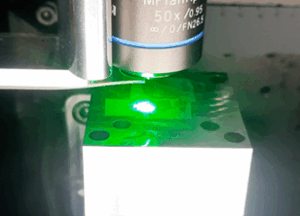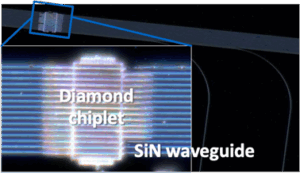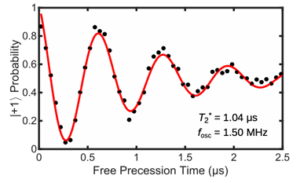24.07.2025Open Position MEP/BEP
Open position MEP: Quantum gate operation with spins in diamond on photonic integrated circuits
Ryoichi Ishihara
Associate Professor, Group leader
Qutech, Dep. Quantum and Computer Engineering, Faculty of Electrical Engineering, Mathematics and Computer Science, Delft University of Technology
Ishihara-lab focuses on the integration technologies for unconventional electronic systems; quantum computers, quantum sensors, neuromorphic computers, and biodegradable sensors. Our work involves new materials, scalable fabrication of electronic and photonic devices, and 3D heterogeneous integration, aiming to realize unconventional electronic systems.
Quantum gate operation with spins in diamond on photonic integrated circuits
The goal of this project is to modify both an existing optical setup for Continuous-Wave Optically Detected Magnetic Resonance (CW-ODMR) and its corresponding code to a pulsed-ODMR setup. Pulsed-ODMR temporally separates the optical pumping from the spin manipulation which provides deeper insight into properties of NV centres, precise magnetometry and coherent spin manipulation.
NV center the ground state consists of a spin triplet (ms = 0,±1) with the ms = 0 state typically exhibiting higher fluorescence compared to the ms = ±1 states. By applying a green laser pulse (532 nm) the NV center is excited and relaxed back to the ms = 0 state due to spin-dependent optical transitions, resulting in the initialization of the NV center to a desired state. Following the initialization, a pre- determined microwave (MW) pulse is applied which is resonant to the transition ms = 0 → ms = ±1. Finally after a certain calculated time period another green laser pulse is applied to readout the state of the system. If the spin is flipped, the fluorescence intensity detected during readout decreases, allowing the spin state to be measured optically.
CW-ODMR suffers from laser repumping of the NV spins through the entire measurement. This simultaneous laser pumping and microwave drive spoils the measurement sensitivity as a result of the competing processes of initializing the spin state (optical laser) and driving transitions (MW drive). In order to mitigate this power broadening, a pulsed ODMR protocol uses a temporally separated laser initialization, a MW control pulse, and a laser readout pulse. In addition to this, pulsed ODMR provides precise control over the spin dynamics, enabling higher spectral resolution and the application of complex microwave sequences for advanced quantum control experiments. This pulsed control facilitates measurements of quantum coherence times and dynamic response, both critical for applications in high-precision magnetometry and quantum computing.



[1] H. H. Vallabhapurapu, et al., Physical Review A 108 (2023)
Interested? Please contact Ryoichi Ishihara r.ishihara@tudelft.nl